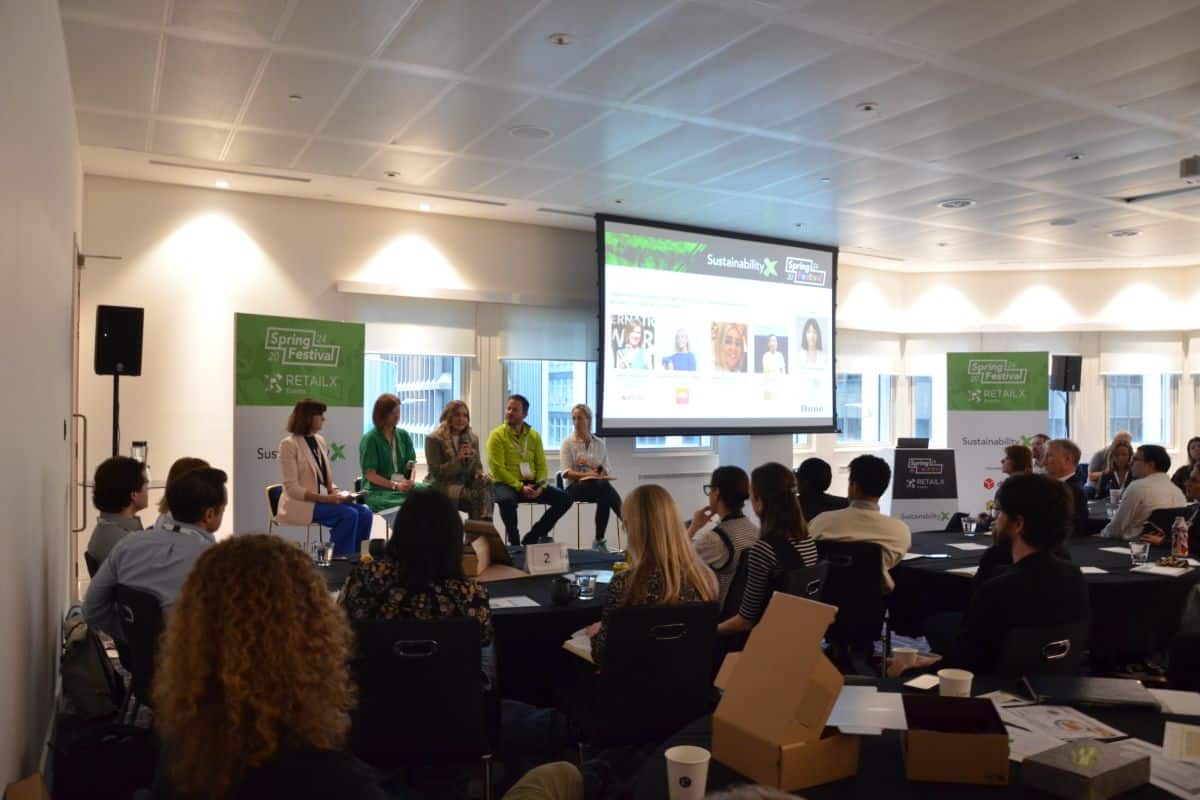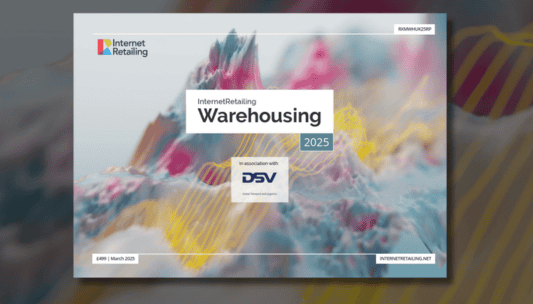The introduction of click and collect gave shoppers an alternative to waiting in all day for a parcel to be delivered, but is the service merely patching up an underlying fault with ecommerce fulfilment? Emma Herrod investigates.
Earlier this year, Richard Locke, Ocado’s Head of Merchandising and Analytics, said: “Click and collect is solving a problem of delivering to someone when they’re not in. The real solution is to deliver where they are, when they are.”
This is the norm for takeaway deliveries: pizza at your desk, dinner from your favourite restaurant at home. In fact, I know someone who, before the days of online ordering and takeaway services which don’t deliver outside of urban areas, would send a taxi to collect their takeaway from their local Indian restaurant. Having young children, living in a rural area and even the peculiar food-related urges common during pregnancy drive all sorts of innovation.
Nowadays, phoning in your choice has been superseded by mobile ordering and ecommerce. At Domino’s Pizza , for example, more than 62% of orders are placed by mobile, with that figure rising to 81% when online orders are factored in.
GROCERS
So why shouldn’t the same be true for your grocery delivery? Local convenience stores have made a living out of ‘I need x now’ or ‘I’ll pick it up on the way home’, and it looks like their larger counterparts are starting to home in on the convenience factor. If the tests of same-day delivery are scaled up to nationwide services, then it could be just the little things that convenience stores are used for.
Amazon Fresh launched in the UK in June and the big supermarket chains are already taking the fight to the retail giant. Tesco , for example, has launched a same-day click and collect grocery service at nearly 300 of its stores which allows customers to place a grocery order before 1pm and collect it after 4pm.
Sainsbury’s , meanwhile, is running a trial of same-day grocery deliveries from three of its supermarkets in Surrey and London. The three taking part are the Streatham Common, Richmond and Brookwood stores. Customers who order by 12pm can collect their shopping from 4pm or have it delivered after 6pm. Assuming the trials are successful, same-day online grocery delivery will be available in 30 stores by Christmas.
It’s also doubling the number of click and collect grocery sites in its store car parks over the next 12 months, as it expands its multichannel proposition to make shopping easier. The service, which was launched in March 2015, offers customers a hassle-free ‘drive-thru’ option which has proved very popular at the first 100 sites.
NOT JUST GROCERIES
Does this desire for fast deliveries apply to food and groceries only? It would appear not. Argos’s launch of Fast Track delivery last year makes same-day delivery the standard normal delivery option for its customers. These can’t all be distress purchases needed the day they are ordered, so is the desire for convenience in our ultra-mobile lives the driver since shoppers know where they will be for the rest of the day?
You just need to look at Doddle Runner , which delivers parcels to a customer where they are, to realise that people want this level of convenience. The service is growing by 20% each month, according to Paddy Earnshaw, Chief Customer Officer, Doddle. He says: “What’s struck us is that once people have used it, you’ve ticked their lazy box. People can use it when they are in real need; they then use it to return items, and it’s as if it has flipped a switch on common pains.” The service made lots of deliveries to pubs in particular in the run up to Christmas last year.
Mark Denton, Head of Retail Propositions, BT Expedite, believes that delivery nirvana lies in sharing your location with a retailer, and the retailer then delivering to you as a person rather than an address. “We’ll come to that fairly soon,” he says, explaining how he knows that he’s in London today between 9am and 5pm, so someone could deliver to him when he knows his precise location for a certain length of time. It’s a case of shoppers becoming an ‘open book’. “My phone is always saying where I am and I’m happy to share that information,” he says. “As a consumer, that’s the ultimate experience, and delivery is just part of your life and you can get on with it without having to wait around for a delivery.”
CONVENIENCE VS SPEED OVER PRICE
Earnshaw believes that delivering to customers ‘where they are, when they are’ makes absolute sense if you evaluate demand. He says that shoppers want their purchase “when they want, in a place that’s super convenient. The challenge is making that happen.”When it comes to delivery, customers want omnichoice to match their omnichannel purchasing. The decision as to how each purchase is delivered comes down to the speed vs convenience over price equation, in which convenience is ‘where they are’ and speed and agility are factored with ‘when they are’. “Fundamentally, you can’t forget that price drives many of the decisions,” Earnshaw adds.
For example, click and collect is the fulfilment method chosen for the majority of orders placed via johnlewis.com. “That’s in my view predominantly driven by price,” he says. “The number that are collected in Waitrose is driven by convenience.” He explains that supermarkets work brilliantly for some people but it ultimately comes down to a choice for each type of person. “They look at the price perspective and then convenience and speed.”
If you look at Amazon, it has size and scale as well as investing in making the delivery choice for customers really easy. It gives customer what they want, when they want it, and it continues to try and find ways of doing that – gaining market share in the process. Asos, with its ethos of delivering to customers when and where they are, has accomplished this, too, in the realm of fashion.
Other examples include River Island , which in 2015 ran a trail of click and don’t collect whereby customers could use the Shutl service to collect their order from their local RI store rather than having to pick it up themselves.
In the US, logistics company Doorman is helping retailers “compete with Amazon in an urban environment” by holding stock of online retailers’ most popular items and delivering them to customers within a one-hour time slot until midnight, 7 days a week. The company also acts as a holding point for consumers’ parcels which the main carriers have delivered throughout the day. It then makes the delivery at a time convenient to the shopper. The service operates in New York, San Francisco and Chicago.
THE FUTURE
Nowadays, that equation of speed, convenience and price could be delivered anywhere through a combination of long-distance carrier hubs such as DPD , in-city hubs such as Doddle or retailers’ stores, and final delivery by bike at a time of the customer’s choosing.
Would all customers choose delivery at the same time, though, such as in the evening once they have returned home from work? Tim Jones, Director of Marketing, DPD, believes not. “Clearly the industry has moved into delivering past 6pm but there is not much demand for post-8pm,” he says. “The spike is around the lunchtime period, 11am – 1pm or 2pm, more so than demand in the evening.”
Referring to Richard Locke’s comment, Jones believes that it’s about convenience and choice. “I wouldn’t want my groceries delivered anywhere but home,” he says, so the choice aspect comes in choosing when the order will be delivered.
The customer being in control is key to delivery. The equation is set but the weighting on each of the parameters of speed, convenience and price is totally in the hands of the customer and determines how each of their orders is delivered. Nappies, for example, are either something that can be ordered online for delivery in 2 or 3 days or are needed right now. “If you know there’s a place to get them immediately then you’ll pay for that,” says Jason Tavaria, COO, Shutl.
Choice is still key as many purchase decisions are made on the basis of the delivery methods available; 25% of shoppers chose a retailer that offered click and collect over one that didn’t during the last quarter of 2015. Now it’s all about one-hour or quick delivery, believes Tavaria, and that’s where larger retailers have the advantage since they can offer a multitude of delivery methods. “There is choice and the customer knows what they get when they go there, and that drives loyalty,” he says.
Patrick Gallagher, CEO, on the dot, agrees. “You have to offer convenience to get loyalty and convenience beats speed,” he says. He believes that delivery has to be scheduled around a person’s life rather than the other way round.
Ultimately, retailers need to deliver what customers want and the carrier industry must continue to innovate to enable this. If they don’t, the retailers will do it for themselves; just look at Amazon. Will we get to a time when delivery drivers/runners/cyclists will use GPS to find the customer by the location of their mobile phone, maybe as a premium service, although most people know where they will be for one hour of their day to enable the delivery to take place. Either way, it’s the shoppers who win; as omnichannel is the way to sell to them, so omnichoice is how they should be served.





